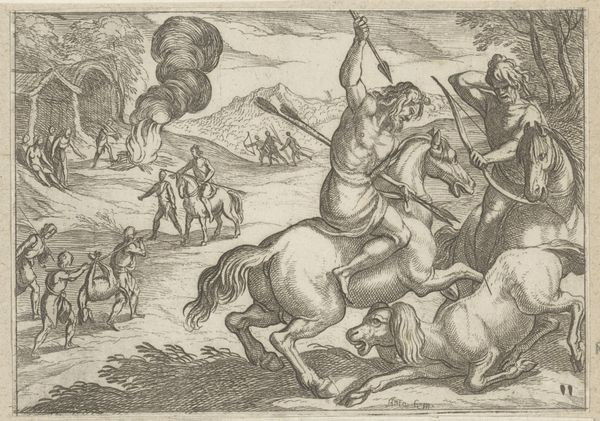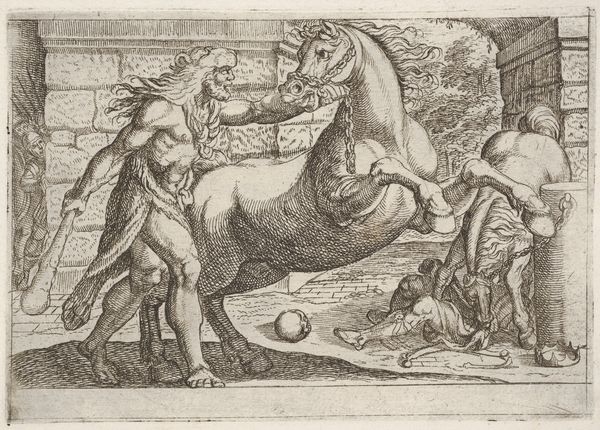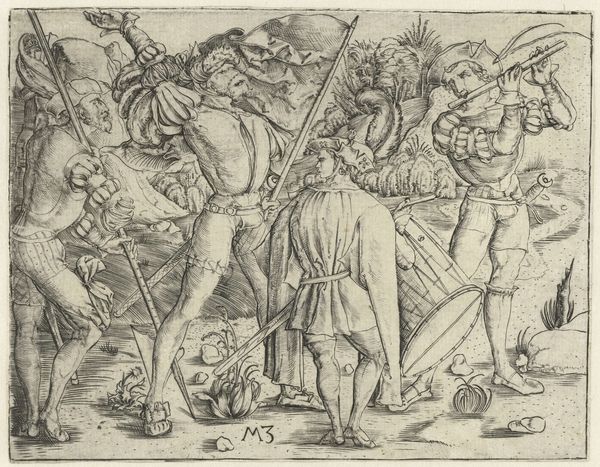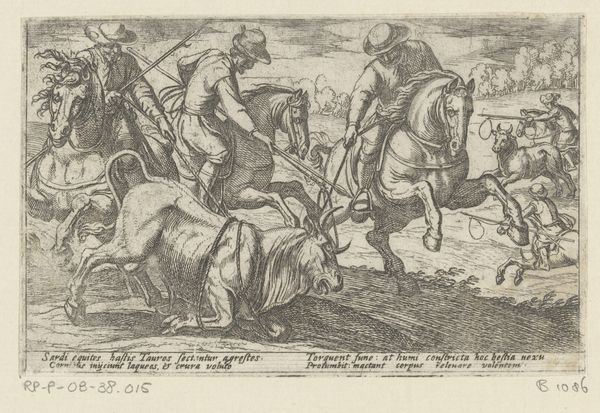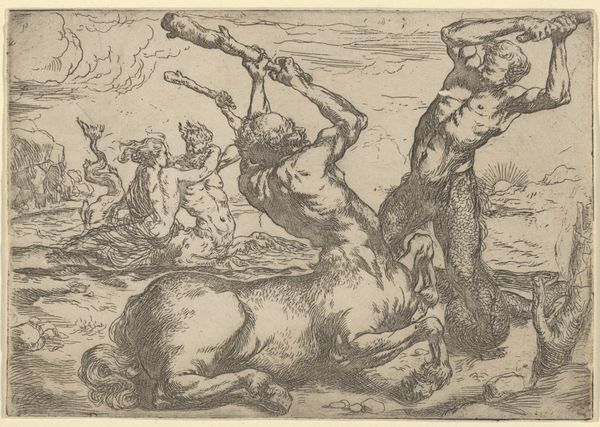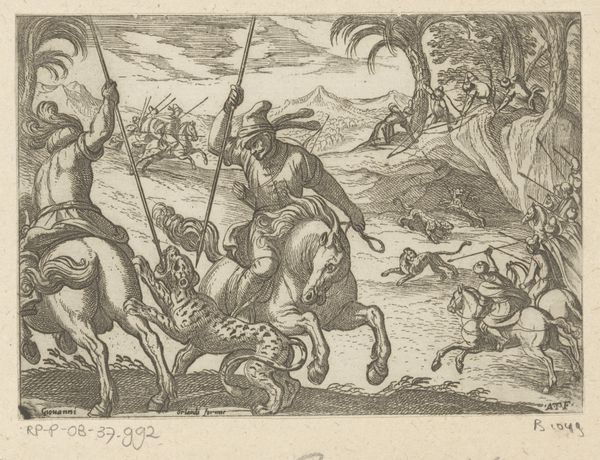
Dimensions: height 77 mm, width 116 mm
Copyright: Rijks Museum: Open Domain
Georg Pencz created this print of Horatius Cocles defending the bridge over the Tiber, sometime between 1500 and 1550. The heroic subject matter recalls classical antiquity, but the print itself was made in Nuremberg, Germany. During the 16th century, Nuremberg was a center for the production and distribution of prints and other images. The city was also a center of humanist scholarship, which encouraged the study of classical literature and history. Pencz was part of a cohort of artists, known as the Little Masters, who specialized in producing small-scale prints, often based on classical themes. The story of Horatius Cocles was meant to instill a sense of civic pride in the viewer. By returning to classical imagery, the artist and his contemporaries made that moment relevant to their own time. We can consult the illustrated books and printed pamphlets that were common at the time to find out more about the conditions that shaped the meaning of this work. By researching its context, we can understand the complex social and political world in which it was created.
Comments
No comments
Be the first to comment and join the conversation on the ultimate creative platform.

